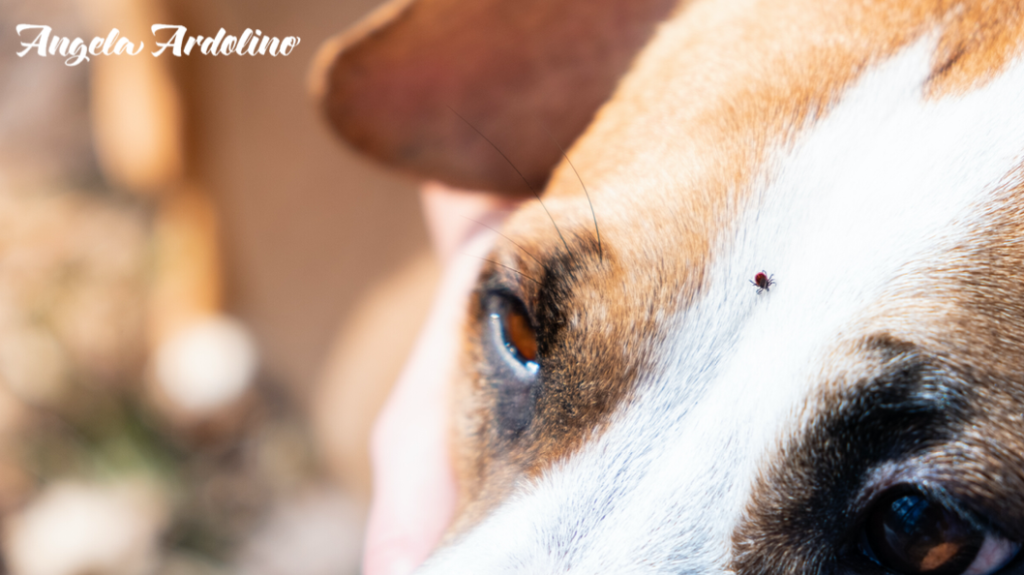Natural Flea Treatments and Repellants for Pet, Home and Yard

When you see your pet scratching, you always hope that it’s not the little bloodsuckers that we all loathe so much. We spend hundreds of dollars on pills, sprays, and topical flea control products every year trying to keep them away. The problem is, most of these products are pesticides that are poisoning our pets, our families, and our environment.
So, if you suspect fleas, here are some steps to take to get rid of them and prevent them from coming back—naturally.
Take a fine-toothed flea comb and sweep the base of your pet’s tail to search for fleas or flea debris, which looks like tiny black specks of dirt that when wet, turn to a blood-red/brown color. Keep a bowl of soapy water on hand and dip the comb into it after each combing. If you find fleas, follow these steps for getting rid of them without using dangerous pesticides and chemicals.
Step 1 – Apply Diatomaceous Earth to pet, carpets, gardens, porches, poop and play areas
Diatomaceous Earth (DE) consists of the crushed up remains of millions of microscopic fossilized single-celled algae, called diatoms. The tiny diatom fragments scratch the surface of the flea, be it an adult or an egg, and draw the water out of its body, dehydrating it and killing it. This means they can’t build up a resistance to it. It is not a chemical and has zero toxicity or odor, so it’s safe to use around your entire family. This means you can treat your pets, their bedding, the carpet and floor, furniture, and anywhere else in the home with DE.
Leave it on for at least one hour before vacuuming. Because DE can irritate the lungs, be sure to wear a mask when you’re applying it or vacuuming it up and keep your pets out of the room until the dust has fully settled.
Step 2 – Bathe your pet with a natural shampoo
When shampooing your pet, use warm water and begin with a ring of soap around the neck so that fleas cannot climb onto your pet’s face and ears. Apply shampoo liberally and massage to lather, covering your pet’s entire body. Leave the shampoo on for at least 2 minutes, then rinse thoroughly.
Here are a few of my favorite natural shampoos:
- Project Sudz Organic Shampoo Bar for Fleas and Ticks
- Citrus Castile Soap
- Only Natural Pet Easy Defense Flea and Tick Shampoo
- Create an apple cider vinegar rinse for after your dog’s bath, using 1 cup ACV per 2-4 cups water.
Fleas can cause intense itching in pets, which is especially pronounced in pets with allergies to flea bites. Itchy pets scratch and bite their skin, leading to further irritation and hair loss. These natural products will help soothe the irritated skin, stop the itch, and promote healing:
Step 3 – Spray or apply a natural repellent such as:
- Project Sudz Flea and Tick Spray
- Cedarwood Atlantica Essential Oil
- Or make your own by adding five drops each of citronella essential oil, rosemary essential oil, peppermint essential oil, and eucalyptus essential oil to one cup of water, shake it, and put it in a spray bottle.
Step 4 – Wash in hot water all bedding and items that dogs sleep or lie on
Step 5 – Treat the outside
- Diatomaceous Earth can be sprinkled around the outside of your home to create a barrier.
- Wondercide Yard Spray
- NEMATTACK – Beneficial Nematodes
Step 6: Work from the inside out
Feed your pet a biologically appropriate diet of raw or fresh food and add supplements to help their immune system.
- Earth Animal Nature’s Protection Daily Herbal Internal Powder
- Probiotics
- Add brewer’s yeast and ½ teaspoon of minced organic garlic to food once a week.
- Add anchovies and goat’s milk to their diet during high flea season.
- Add a teaspoon of Apple Cider Vinegar to their water.
- EASE Tincture for Allergies with Full Spectrum CBD, Frankincense and Turmeric oil
- Clear Heart (HWF- Heartworm Free)
Step 7 – Repeat preceding steps every week until the cycle is broken
For every single adult flea, there are about 10 cocoons, 35 larvae, and 50 eggs hiding in carpets, pet beds, cracks, corners, and furniture.
Stopping an infestation of fleas from persisting involves breaking the flea life cycle at any life cycle chain: from egg to larval stage (three larval stages) to pupa to adult stage. The more points that can be broken in that chain or lifecycle, the faster flea control will be achieved and the more permanent the results will be.
- Egg – The flea egg hatches in 2-21 days, depending on environmental conditions.
- Three larval stages – The larval stages grow and undergo their molt’s over about 9-15 days.
- The pupal stage (cocoon) – The cocoon is the crux of flea infestation persistence in the household. It generally hatches in 1-2 weeks but can last up to a year.
- The adult flea – Adult fleas can live for some weeks (maximum of about 2 months if no host is present) in ideal, cool, moist conditions.
Be consistent with this routine and you will win the battle.
About Angela Ardolino

Angela Ardolino is a holistic pet expert who has been caring for animals for over 20 years and operates a rescue farm, Fire Flake Farm, in Florida. She is also the owner of Beautify the Beast, a natural pet salon and shop. After getting her certificate in Medical Cannabis Biology and Therapeutic use from the University of Vermont School of Medicine, she founded CBD Dog Health to provide high quality, all-natural medical cannabis products designed specifically for pets. Angela has seven dogs, Odie a 12-year-old mini-schnauzer, Nina an 8-year-old Doberman. Jolene a 7-year-old mutt, Maza a 7-year-old mutt, Rhemi an 8-year-old poodle, Potato a 15-year-old shih-tzu, and Miss Daisie a 15-year-old black lab, plus 4-10 more at any time she is fostering or boarding. She uses Full Spectrum Hemp Extract on all her pets at her rescue farm every day, and has since 2016. She is a member of the Society of Cannabis Clinicians, the Veterinary Cannabis Association and has trained hundreds medical doctors and veterinarians about the therapeutic uses of medical cannabis on animals. Visit www.angelaardolino.com for more information.